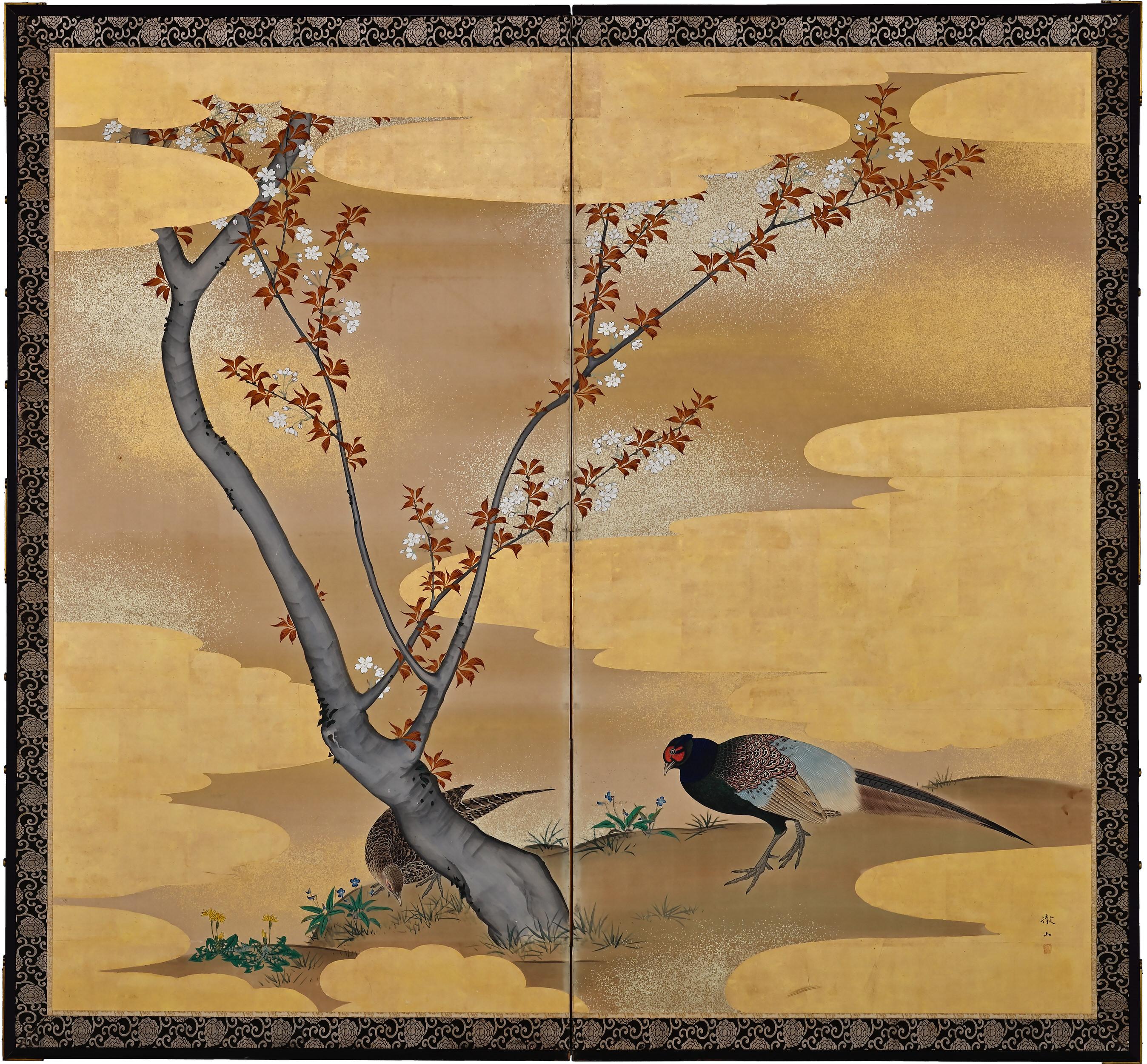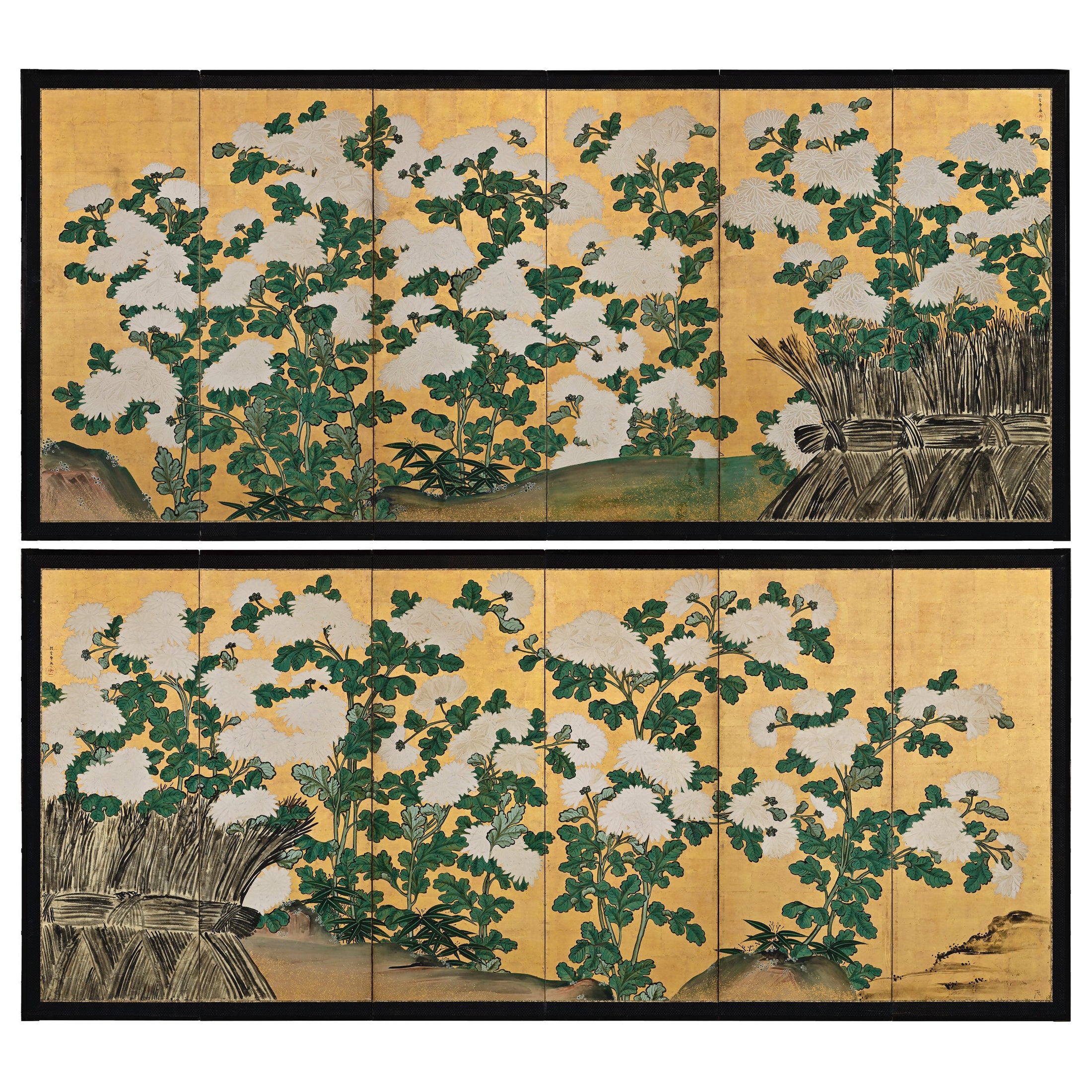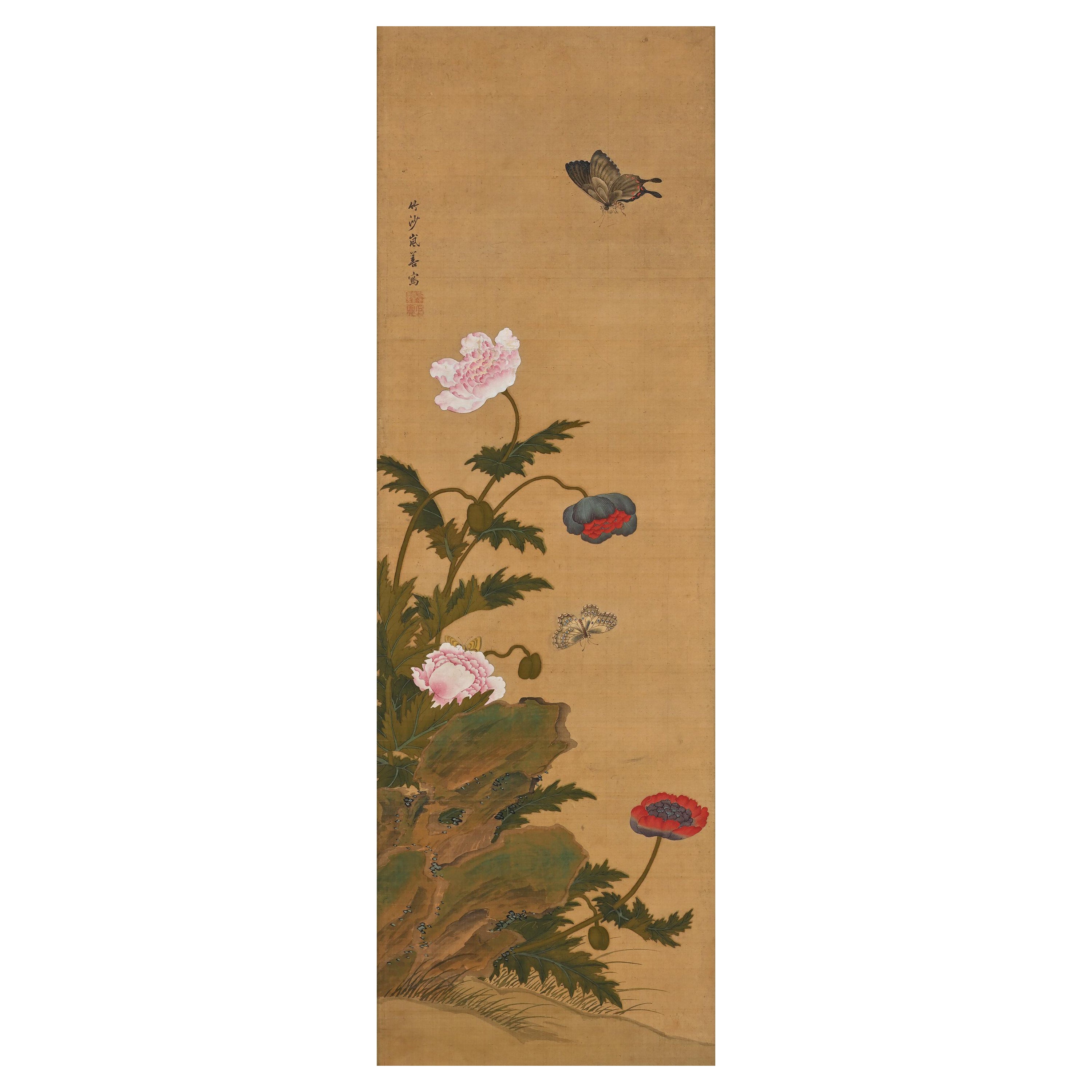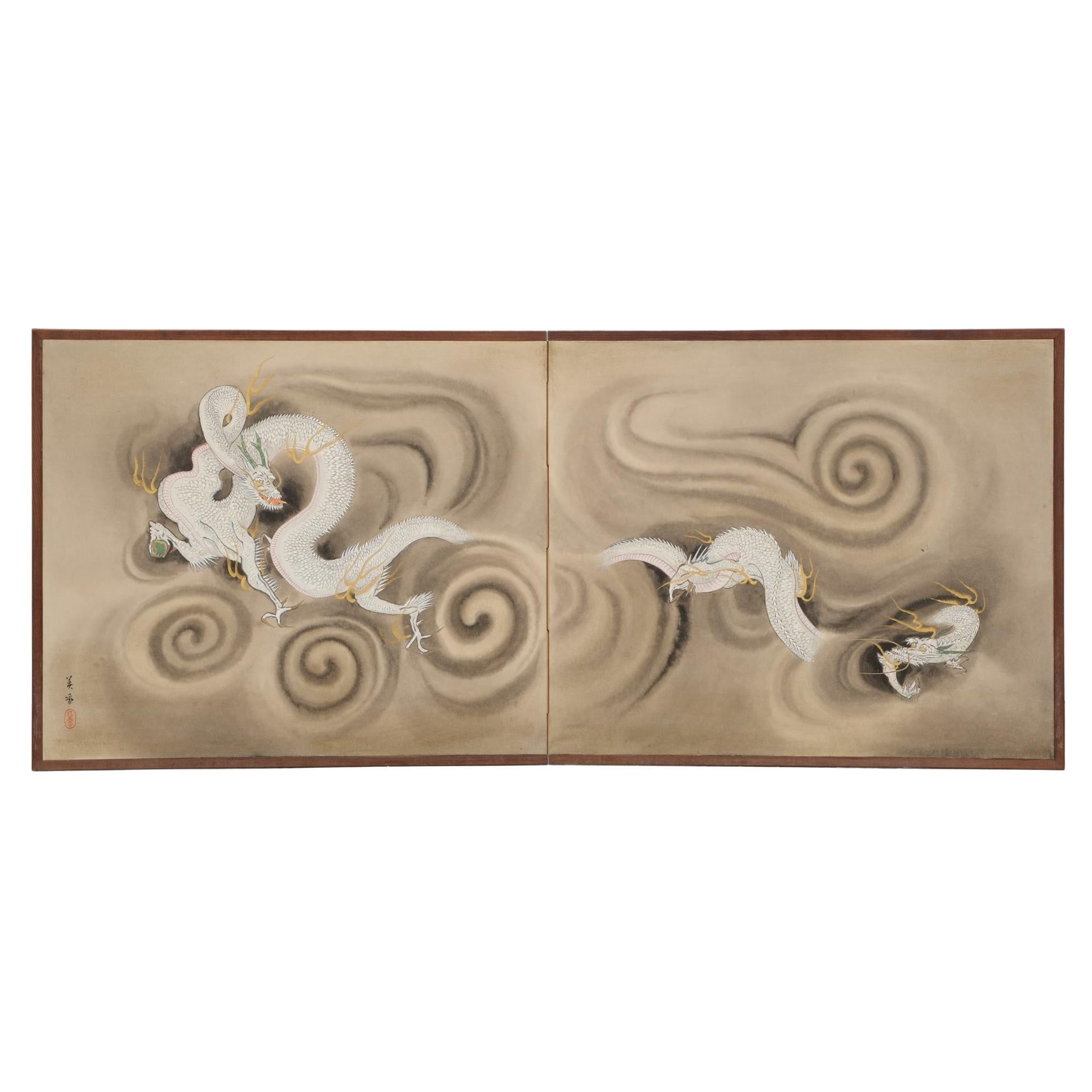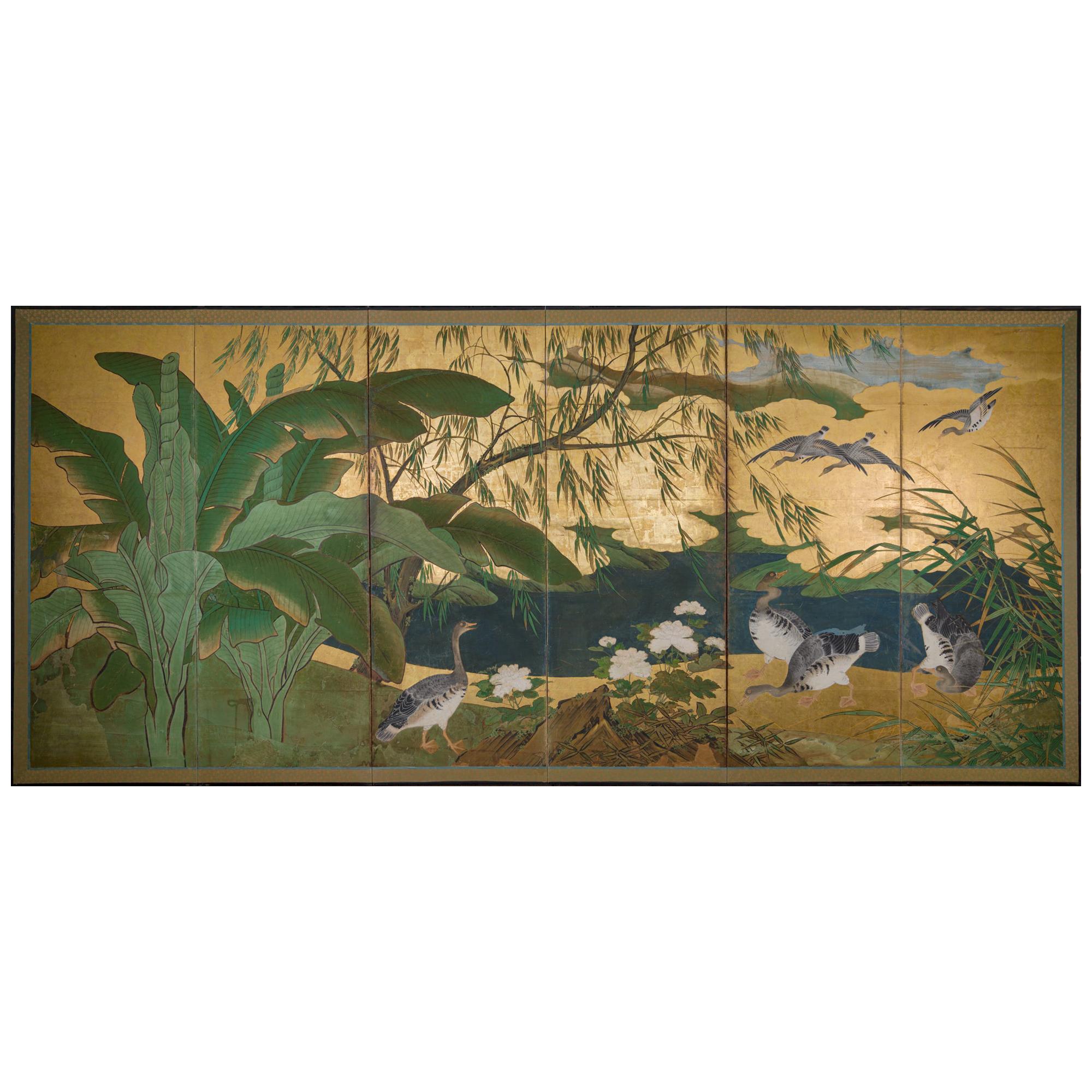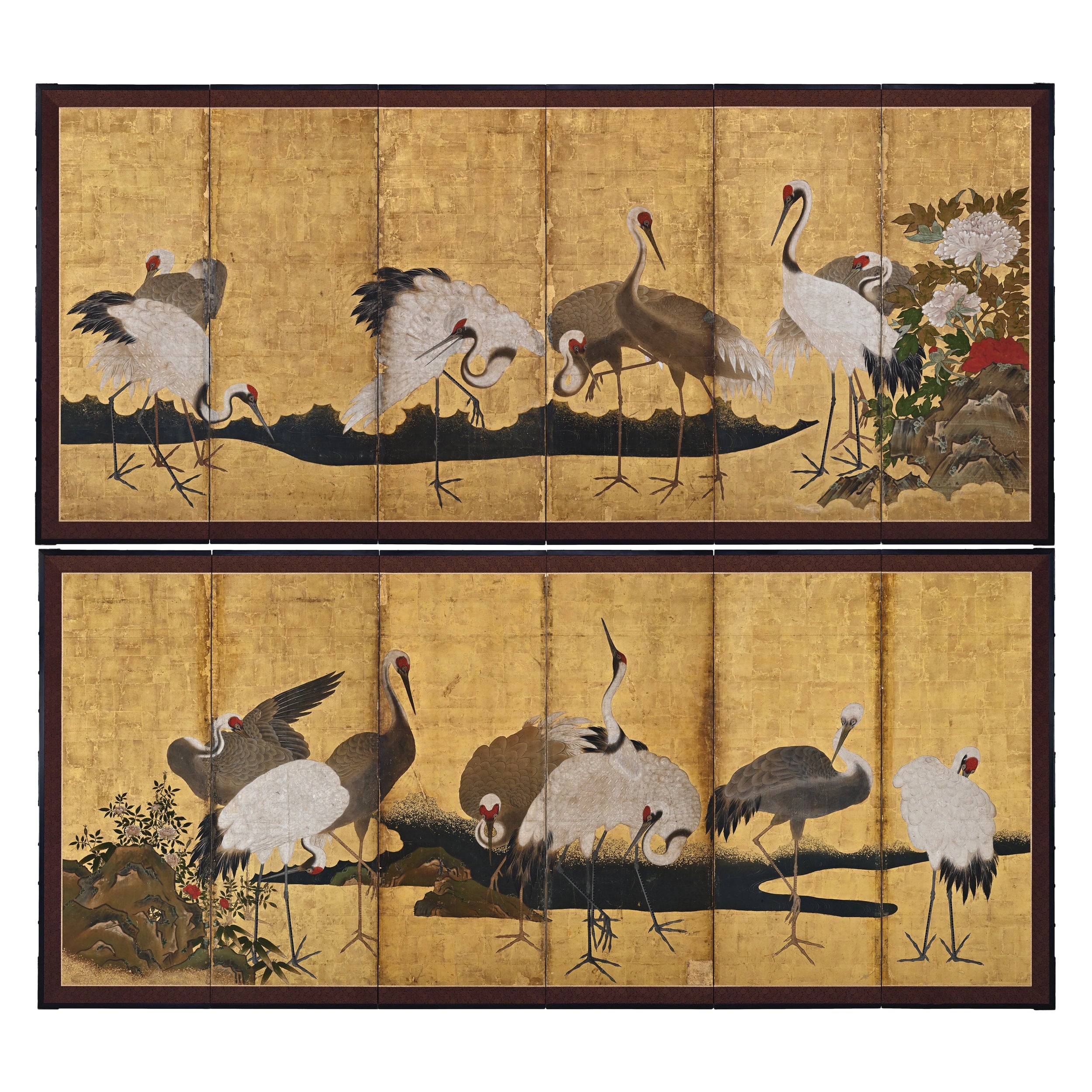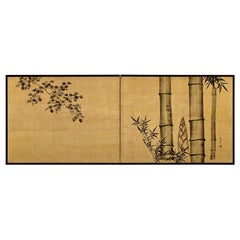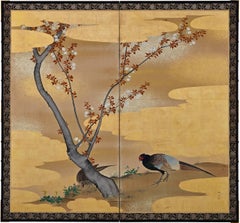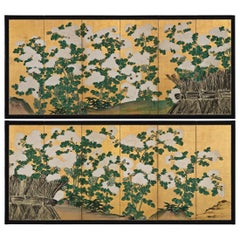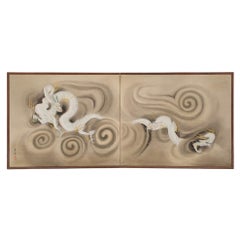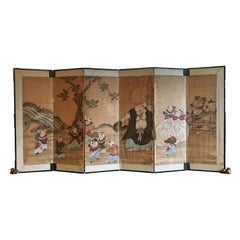
19th Century Japanese Tea-Ceremony Screen One Hundred Butterflies by Mori Kansai
View Similar Items
Want more images or videos?
Request additional images or videos from the seller
1 of 10
19th Century Japanese Tea-Ceremony Screen One Hundred Butterflies by Mori Kansai
About the Item
- Dimensions:Height: 23 in (58.42 cm)Width: 72.5 in (184.15 cm)Depth: 0.75 in (1.91 cm)
- Style:Edo (Of the Period)
- Materials and Techniques:
- Place of Origin:
- Period:
- Date of Manufacture:circa 1850
- Condition:Refinished. Wear consistent with age and use. The screen has recently been restored and remounted.
- Seller Location:Kyoto, JP
- Reference Number:1stDibs: LU2472325991212
About the Seller
5.0
Recognized Seller
These prestigious sellers are industry leaders and represent the highest echelon for item quality and design.
Gold Seller
These expertly vetted sellers are highly rated and consistently exceed customer expectations.
Established in 2001
1stDibs seller since 2016
62 sales on 1stDibs
Typical response time: 6 hours
More From This SellerView All
- 19th Century Japanese Screen for Tea-Ceremony, Ink Bamboo and Plum on Gold LeafLocated in Kyoto, JPThree Friends of Winter Nakajima Raisho (1796-1871) Late Edo period, circa 1850 Ink and gold leaf on paper. This is a double-sided Japanese Furosaki or tea-ceremony screen from the mid 19th century; bamboo and plum on the front, young pines the back. It by Nakajima Raisho, a master painter of the Maruyama school in the late Edo and early Meiji periods. In this work Raisho combines exquisite ink brushwork with large open spaces of brilliant gold-leaf to inspire the viewers imagination. Rather than naturalism, he is searching for the phycological impression of the motifs, resulting in abstraction and stylization. His simplification of the motifs the result of looking to capture the inner nature of the objects. This art motif is known as Sho Chiku Bai, or the Three Friends of Winter. Evergreen pine connotes steadfastness, bamboo suggests both strength and flexibility, while plum blossoms unfurling on snow-laden branches imply hardiness. Combined, this trio is emblematic of Japanese new year. Chinese literati were the first to group the three plants together due to their noble characteristics. Like these resilient plants flowering so beautifully in winter, it was expected of the scholar-gentleman to cultivate a strong character with which he would be able to show the same degree of perseverance and steadfastness even during times of adverse conditions. The screen would have been placed near the hearth of a room used for the Japanese tea ceremony, shielding the fire from draughts and also forming a stimulating and decorative backdrop behind the tea utensils. It would have been used in the Hatsugama, or first tea-ceremony of the new year. Nakajima Raisho (1796-1871) originally studied under Watanabe Nangaku before entering the school of Maruyama Ozui. He was the highest ranking Maruyama school painter at the end of the Edo period and was known as one of the ‘Four Heian Families’ along with Kishi...Category
Antique Mid-19th Century Japanese Edo Paintings and Screens
MaterialsGold Leaf
- Early 19th Century Japanese Screen. Cherry Blossom & Pheasants by Mori TetsuzanLocated in Kyoto, JPMori Tetsuzan (1775-1841) Pheasants and Cherry Blossoms Two-fold Japanese screen. Ink, color, gofun, gold and silver on paper. A two-fold Japanese bir...Category
Antique Early 19th Century Japanese Edo Paintings and Screens
MaterialsGold Leaf
- Mid-18th Century Japanese Screen Pair, One Hundred Flowers, ChrysanthemumsLocated in Kyoto, JPOmori Soun (b. 1704) Chrysanthemums - One Hundred Flowers A Pair of Six-fold Japanese Screens. Ink, color, gofun and gold leaf on paper. Dating ...Category
Antique Mid-18th Century Japanese Edo Paintings and Screens
MaterialsGold Leaf
- 19th Century Japanese Scroll Painting by Igarashi Chikusa, Poppies & ButterfliesLocated in Kyoto, JPPoppies & Butterflies Ink, pigment and gofun on silk Igarashi Chikusa (1774-1844) Signature: Chikusa Ran Zen Upper Seal: Ran Shuzen Lower Seal: Kyoho Dimensions: Scroll: H. 68” x W. 18” (172cm x 45cm) Image: H. 38.5’’ x W. 12.5’’ (98cm x 32cm) This composition shows elegant images of poppies and the butterflies that are inevitably drawn to them. It captures a momentary glimpse into a world both visually dazzling and startlingly realistic. The painting is infused with sensitivity and attention to seasonal change and weather conditions. The thin and fragile poppies are beautifully depicted with brilliant colors and the butterflies are similarly infused with life. The painting is on silk which requires extremely precise painting skills as no element once painted can be removed. Poppies were a favorite subject of Rinpa school artists through the ages. Originally they were somewhat abstracted but by the age of Sakai Hoitsu...Category
Antique Early 19th Century Japanese Edo Paintings and Screens
MaterialsSilk
- Meiji Period Japanese Screen Pair, One Hundred Birds by Hasegawa GyokujunLocated in Kyoto, JPOne hundred birds Hasegawa Gyokujun (1863-1921) Meiji period, circa 1900. Ink, color and gofun on silk. Dimensions of each screen: H. 170 cm x W. 190 cm (67’’ x 75”) Despite the title, well over 100 birds are represented in this pair of two-fold Japanese screens (the title functions figuratively to convey the idea of a large number). The monumental work is rendered with a comprehensive and highly complex composition which is exquisitely executed and meticulously colored. More a celebration of naturalism than the traditional “One Hundred Birds” paintings which originated in China. This was a subject matter known for its auspicious meaning as much as its actual depiction of nature. These paintings generally had a phoenix (occasionally peacocks) placed in the center, and the other birds paying homage to it. In this quintessentially Japanese scene painted by Gyokujun, a couple of long-tailed birds modeled after paradise flycatchers are included; these are traditional auspicious motifs in Oriental bird and flower painting and denote themes such as celebration and enduring generations. In addition there is the playful inclusion of single exotic parrot. Even so, the vast majority of the birds and flowers are native to Japan. Reading the scene from right to left, from spring through to autumn, the overwhelming sense is one of movement and haste. It is almost as if the birds are in a race, with the fleetest leading the way forward. Although these native birds were commonly drawn amongst artists of the Shijo school, rarely were they painted with such drama and dynamism. It is not strictly a depiction of sketched birds whose manner was faithfully handed down through the traditions of the Shijo school. Rather we see Gyokujun seeking and achieving new expressions in the heart of the turbulent Meiji period. Hasegawa Gyokujun (1863-1921) was born in Kyoto. He was the eldest son of Hasegawa Gyokuho, a Shijo school painter who studied under Matsumura Keibun. Gyokujun studied painting under his father and became a prominent member of the Kyoto painti ng world from a young age. In 1891 he established the ‘Young Painters Social Club’ along with Takeuchi Seiho, Miyake Gogyo and Taniguchi Kokyo. Also in 1891 he was selected as a judge of the Great Private Paintings Exhibition along with Takeuchi Seiho, Yamamoto Shunkyo...Category
Antique Early 1900s Japanese Meiji Paintings and Screens
MaterialsSilk, Wood
- Japanese Screen Painting, Early 19th Century, Autumn Flowers by Sakai HoitsuLocated in Kyoto, JPA two-fold Japanese screen by the Rimpa school artist Sakai Hoitsu (1761-1828), Japan, 19th century, Edo period. This small Japanese folding screen pai...Category
Antique Early 19th Century Japanese Edo Paintings and Screens
MaterialsWood, Silk
You May Also LikeView All
- Japanese 2-Panel Furosaki’byôbu 風炉先屏風 'Tea-Ceremony Folding Screen' with DragonsLocated in Amsterdam, NLA striking low and wide two-panel furosaki’byôbu (tea-ceremony room divider) painted with two bright white dragons (ryû) flying amidst swirling black clouds. The left dragon holds a ...Category
Early 20th Century Japanese Paintings and Screens
MaterialsWood, Paper
- 19th Century Japanese Edo Six Panel Kano School Landscape ScreenLocated in Rio Vista, CALate Edo period 19th century Japanese six-panel landscape screen featuring a cypress tree over a flowering hibiscus with a pair of hototogisu birds. Kano school painted with ink and ...Category
Antique 19th Century Japanese Edo Paintings and Screens
MaterialsSilk, Wood, Paper
- Japanese Six Panel Screen with Hotei, Edo Period, Early 19th CenturyLocated in Austin, TXA delightful Japanese six panel painted paper screen featuring the beloved figure Hotei, Edo Period, early 19th century. Hotei, called Budai in China, and known as the Laughing Buddha or Fat Buddha in the West, is considered to be an emanation of Maitreya, the Buddha of the Future. In Japan, he also holds a special place as one of the Seven Lucky Gods, being the god of fortune, and protector of children. He is always portrayed as a mirthful and corpulent man, dressed in loose robes that show off his round belly. He carries a sack with him, said to be filled with treasure. As the protector of children, he is often portrayed with them playing on or around him, as he is here. The children portrayed in this screen are dressed in Chinese style clothing...Category
Antique Early 19th Century Japanese Edo Paintings and Screens
MaterialsSilk, Paper
- Early 19th Century Japanese Six-Panel Screen, Tropical GardenLocated in Hudson, NYWith a banana leaf palm on the left, at water's edge with geese. Perhaps a scene from the southern islands. Mineral pigments on mulberry paper with gold leaf and a silk brocade border.Category
Antique Early 19th Century Japanese Paintings and Screens
MaterialsGold Leaf
- Set of 6 Large Kakemonos Japanese Mythology, 19th Century Japan circa 1800 EdoLocated in Beuzevillette, FRBeautiful set of 6 large kakemonos from 19th century Japanese mythology. Paper support with a canvas pasted on the paper Wonderful set that is part of Japan's history and beliefs When not hung, the Kakemonos are rolled up. circa 1800 - Japan - Edo Period A kakemono translates as "object to hang". In Japan this refers to a painting or calligraphy, most often done on silk or paper framed in a scroll that was intended to be hung on walls or in public lighting. This particular form, which allows them to be in a roll, dates back to the Tang dynasty in China (this would be related to the copying and preservation of ancient Buddhist texts). A Kami is a deity or spirit worshipped in the Shinto religion. A Yokai is a spirit, ghost, demon, or strange apparition from the creatures of Japanese folklore. Each of these kakemonos represents a unique story: - A kami, a Japanese deity, is shown painting a rainbow. Indeed, he performs the action with his right hand while his left hand holds a kind of basket with three pots of paint. This kami has a rather closed attitude. He is standing in a dark and tormented sky. Below this figure, 8 villagers are dressed in traditional Japanese clothes. Their faces are softened. They are not afraid of the elements made by the kami above their heads. - A character with an unreal look is holding a kind of jar with his two hands, which he spills on human figures above. This being is floating in the air, probably a character from mythology, perhaps Susanoo. Underneath, villagers on umbrellas. They are trying to protect themselves as best they can from what is falling on them. One of them is carrying baskets with fish on her shoulders. A character in the background is thrown forward and falls. - On this kakemono, the god Raijin, dressed in a white and blue outfit, strikes the sky with his two drum hammers to create lightning and its thunderous sound. Surrounded by Tomoe and a long red scarf, Raijin, enraged and with dishevelled hair, creates a dark and violent storm. The villagers seem frightened by this meteorological phenomenon. One of the villagers can be seen fainting in the arms of a man. This scene may seem chaotic, but Japanese legend tells us that once a field is struck by lightning, the harvest is good. - On this kakemono, we see an unreal-looking figure holding a fan, as if he were sweeping away the bad weather, or simply producing gusts of wind. He is probably the kami of wind and air, Shina tsu-hiko. The figures below him seem surprised by so much wind. An umbrella flies away on the left, the women hold their hair and scarf, the clothes are caught in the power of the wind, there is even a woman on the ground on the bottom left. - This Kakemono represents a short moment. This Raiju is a yokai (ghost spirit...Category
Antique 19th Century Japanese Edo Paintings
MaterialsPaper
- 17th Century Japanese Two-Panel Screen, Gibbons of FolkloreLocated in Hudson, NYJapanese two-panel screen: Gibbons of Folklore, Edo period (17th century) Kano School painting of gibbons in Japanese fables. The left panel represents a Japanese fable of a monkey a...Category
Antique Late 17th Century Japanese Edo Paintings and Screens
MaterialsSilk, Wood, Paper
Recently Viewed
View AllMore Ways To Browse
Insect Screens
Insect Specimen
Samurai Screen
Japanese Tea Master Artist
Meiji Folding Screens
Japanese Screen Samurai
Folding Tea Stand
Yamaguchi Painting
Edo Calligraphy
Silver Leaf Folding Screen
Hagi Japanese
Antique Japanese Tea Ceremony Paintings
Screen Edo Silver
Edo Period Antiques
Mori Tetsuzan
Asian Panel Screens
Asian Screens And Panels
Paneled Asian Screens

